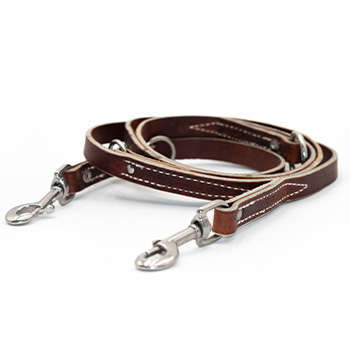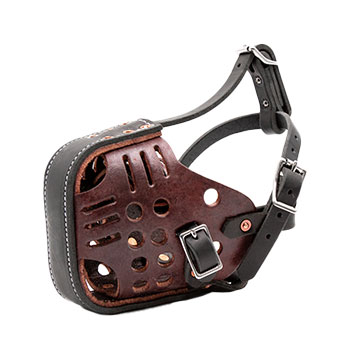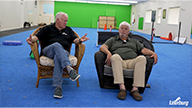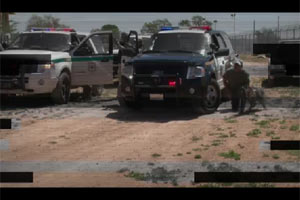Jail Dogs: Training Law-Enforcement Canines for Detention Detail
About Author: K.G. O'Connor is a corporal and K-9 handler with the Guilford County Sheriff's Office in Greensboro, North Carolina.

Your agency has decided to assign a K-9 Team to your detention facility and courthouse to add a nonlethal tool and provide additional support to officers who are working in a hostile environment. Your commanding officer has limited or no knowledge of canines and believes that he or she can bring a patrol dog in from the street or purchase a dog without regard to the environment in which he will be working. However, this undertaking needs much more consideration. Let's look at the typical process of adding a canine, then examine how detention and courthouse work differ from other scenarios.
The Typical Scenario
Acquiring a canine for patrol work usually happens as follows. First, a law-enforcement agency selects a U.S. trainer-supplier who imports dogs from Europe. Imported canines generally are quality animals from a line of working dogs that have the correct temperament and drive for law enforcement. The dogs have some initial training, and they are further trained in the United States for specific duties such as narcotics or explosives detection, tracking, officer protection, building searches, cadaver searches, or a combination of two or more of those functions. Not all dogs are suited for all tasks. Some excel at narcotics detection but are poor at tracking; others may be great at tracking but fail in apprehension ability. The dogs typically are trained in facilities on large tracts of rural land and housed in large kennels.
Next, the agency selects a handler. As a matter of policy, the agency should thoroughly interview and carefully consider the officer who will handle the canine. Good handlers, dedicated to the program and the canine, are a must if your unit is to be successful.
When handler and canine have been selected, they undergo three to eight weeks of initial training. After training is completed, the new team heads home to its first assignment in a jail or courthouse setting — but here the situation begins to differ from other law-enforcement work.
A Different Challenge
Jails, detention centers, cellblocks, corridors, courthouses, stairways, constant commotion, and elevators: your dog likely has never encountered any of them. It's possible that he has never been on a surface other than concrete, grass, dirt, wood, and maybe linoleum floors. Add to those challenges lots of inmates, lots of other officers, judges, lawyers, nurses, and the public and civilian staff. Chances are your canine did not receive the training he needed to work in close-quarter conditions.
So, what do you do now? Now you start your dog on part two of his training: the part he did not get originally. In most cases, consistent training and exposure to every situation you can think of, and then some, will fix many environmental problems. The dog has come to you hardwired; your job as handler is to splice in a switch. For the first few months, you will turn that switch on and off. Then, after consistent and varied training, your canine will learn to turn the switch on and off using his own perceptions and your commands, tone of voice, and the body language of yourself and others. One caution: some dogs do not have the right temperament to do close-quarter work. When choosing a dog, tell the supplier where it will be working. His knowledge of canines should help him choose a dog that is best suited for that environment.
Let's look at some ways to fine-tune your canine and your partnership and turn the two of you into a valuable K-9 Team.
Meeting the Challenge
Your canine should by now be proficient at everything you have covered in school. As you begin part two of his training, we will assume that you have bonded somewhat with your partner. Your authority was accomplished by earning your partner's respect, building trust, and bonding. Following are several examples of trust building.
If you've ever tried to put a dog in a swinging hammock, you know that dogs do not, by nature, enjoy being up off the ground or swinging back and fourth in an unstable place. But by small steps — first into the hammock, “stay,” “good boy,” then back onto the ground with his toy and play time, all steps repeated several times — the dog realizes that he can trust you and please you by obeying. Next, you get him to “sit,” “lie down,” and relax while you swing him. Before long, you will approach the hammock and find that he will want to get into it without your command to please you and receive your affection, praise, and reward.
A trestle walk is the same type of scenario. The walk is three feet off the ground with 3-inch spaces between a 12-foot span of two-by-fours. Begin by having the dog get up onto the trestle and “stay”; bring him back down and repeat. Then put him on the trestle and encourage him to walk the two-by-fours, slowly at first, stopping periodically. As he gets used to this exercise and sees that it pleases you, he will feel secure with your commands and guidance and it will become something that he wants to do. The point is not that he must learn to walk on two-by-fours, it's that he must trust you and trust what you tell him to do.
Find and try other examples in your everyday work and elsewhere. Going through a variety of doorways, crowded areas, and offices, and into and out of elevators are all situations you may encounter as a team. Walk along busy roadways and through parking lots, construction areas, smoke, and so on. You may not experience all those scenarios in your workplace, but search them out and expose the dog anyway. Remember, however, that you must always be in control of your canine, especially when working around other humans. Your partner will react to people's actions. You, the handler, must be constantly vigilant for potential, though unintentional, actions of the people you and your dog come into contact with everyday. Remember, your partner will protect you from a perceived assault even without a command from you or if you do not see it coming.
Socialization On the Job
If you decide that contact between your canine and people other than yourself is allowed on the job, it should be done only in what the dog perceives as safe areas, such as your office, and only after you have given your canine the okay. Notice that I said contact, not interaction or closeness. Walking into a facility, courthouse, or other congested area where the dog could be called on to work and letting everyone engage him by petting, rubbing, clicking, clucking, or whistling is unacceptable. When he's working, he's working.
That can be a difficult situation; you do not want to come across as abrupt or rude, especially to judges, district attorneys, and other officials. We are, of course, talking about the good guys. Take a minute and explain your partner's training and capabilities. Like guide dogs, people want to stop and love on police K-9s without realizing that they are working. Once people have been enlightened about the canine's duties and your responsibilities, they will understand and appreciate you taking the time to explain your position.
Actions you have taken every day without thought now become important. Reaching out quickly to shake hands with a colleague may now be problematic. Someone coming up and grabbing you from behind in horseplay can be a disaster. Your partner may perceive someone running past you or moving in too close as an assault on you. All those things can be handled by getting used to using some pre-commands. For example, when waiting for an elevator, give the “sit, stay,” commands before the doors open, and keep him in that position until you see that it is all clear for you to enter. Before long, your canine will “sit” and “stay” without command and will advance only as you move. Every situation you encounter is a chance to train. When you get to a destination and praise is allowed, make sure that you give it to him. I have found it best that my partner and I approach the other party or parties and that I extend my hand first. It will take only seconds until your partner, based on your tone of voice and body language, perceives no hostility in such encounters. After friendly encounters in which he behaved well, praise him. If you think about what your day can be like and all of the different situations you may encounter, you can understand why you should use varied environments for training.
Encounters of the Worst Kind
Officers who have worked inside detention facilities, even for a short time, learn that inmates are constantly watching and looking for ways to put something over on us or play on our weak spots. The same holds true for the canine working inside the jail. Many inmates are knowledge about dogs — not only trained K-9s, but breeds such as Rottweilers and Pit Bulls. I once met an incarcerated inmate who had trained his own dog with a well-known kennel owner who trained and supplied dogs to the U.S. Marine Corps and law-enforcement agencies.
Set up a training scenario in which you and your partner patrol around or past a jail block or pod. One or more inmates, whom you cannot see, start barking like dogs or banging very loudly. Your partner reacts by barking or lunging toward the source of the noise, which gets more inmates going, increasing the canine's reaction. There are several possible ways to handle this situation. Before you handle the inmates, let's back up and help your partner. Remember, the inmates are trying to agitate your partner to see his reaction and yours. This is not a riot or assault. If we allow the canine to react to every little knock, bang, and bark from inmates, he will learn to react that way every time, as well as to similar commotion elsewhere. He also will anticipate such actions when approaching these areas. The handler must guide him through these situations. Giving calm pre-commands and continuing without so much as missing a step most times is the best decision. You must show the inmates that you have complete control over your partner.
Take a look at the same scenario, but this time you confront the problem. You'll soon realize that when you worked solo, you could close to inmates quickly and easily. But it can be difficult to communicate effectively in close quarters with your partner at your side. Remember not to use your partner to unnecessarily intimidate inmates. The best solution in this case, in my opinion, is to put your canine up and return alone and handle the situation. If you and your partner allow inmates to get you noticeably angry and put your canine into an alert or aggressive mode, it can become a problem.
One of the best ways I've found to handle such a situation is to continue on my patrol without missing a step but immediately use my radio to contact our master control room and have all phones and TVs turned off in that particular area. That action has reduced such behavior by 90 percent without negatively affecting my canine. Negotiation can be a useful tool for you and your partner.
Consider another scenario in which an inmate who has had cooperation issues is being escorted to court. The inmate is staring down (making eye contact) and using body language to taunt or tease your partner. As he is shackled and cuffed for transport, the inmate crosses the line in both you and your dog's perception, and your partner lunges and starts to bark aggressively. Be nice until it's time not to be nice: allow your partner to do what he is trained to do. The inmate is knowingly sending negative signals to cause a commotion and harass you and your dog. Eye contact and subtle body movements or sounds directed at your canine constitute challenges in the dog world. Try to communicate with the inmate and explain why your canine is reacting as he is, but do not remove your dog from the scene. Once the inmate complies with your request, circle your dog away from him, give the “quiet” command, retake your watch position, and resume your assignment.
You could give the “quiet” command in a calm, firm manner and put him on watch, but correcting your canine in this situation sends the dog confusing signals and allows the inmate to achieve his goal.
Jail and prison inmates can get information about almost anything, including how to kill your partner. Even on the street, the bad guys wrap their arms before or just after they commit a crime in the event they run up against a K-9, and it's the same inside. You know how your partner takes an arm bite; think about the presentation of a wrapped arm and what could be in the inmate's other hand.
Specialized Training
Look at your new relationship as specialized handling. Just like humans, canines have strengths and weaknesses. Do not work less on their strengths, but build their weak areas. Give a canine extra praise for what he does best and he will in improve in other areas as well. Much of what the handler is feeling — relaxation, tension, anger, and sadness — travel through the lead to your canine partner. Even when off lead, at home, he picks up on your state of mind or degree of wellness. Bonding, trust, and respect; three little words that say it all. When you and your partner both fully understand those three words, you are 90 percent there.
Trust your dog: he picks up on things you don't hear, see, or sense. I cannot tell you how many times my partner has done a “reverse heel.” The first time that happened, shortly after we started working together, I could not get him to “heel” while I talked to several officers and supervisors. I corrected him several times. Finally, in some frustration, I brought him around in a circle and sure enough, an inmate was standing behind me just around the corner, out of my sight, but not out of his. He was telling me, “There's someone behind us that you can't see, and I'll watch him for us.” He was literally watching my back. That comes naturally to some canines.
The right-side heel command also can be tremendously helpful. Instead of having large groups of civilians or inmates move to your right, train your partner to right-heel, especially when moving down hallways. It's a good idea to set up some walk-bys and heel-arounds with other officers on your shift, or set up a training scenario in congested and noisy areas inside the jail and courthouse. Continue to try new and different scenarios. Become familiar with every area of the facilities, and expose your partner to these locations on a regular basis.
Other areas you should work on include escorting shackled and cuffed inmates. Keep a safe distance, because inmates who are cuffed arm-in-arm or shackled hand and foot can stumble and fall, which could send a signal to your dog. Train with your partner with other officers as they pat down and cuff inmates or court intakes. It's been proven that a majority of individuals being cuffed react just as the second cuff is being applied. That may not be cause for you to engage your canine, but be ready.
Always work your canine on a lead inside the facilities. Save off-lead work for training. If you must use your canine, it likely will be an “applied bite” to the aggressor. Remember that when it's all asses and elbows, your partner may need your guidance. Other officers must realize that they should disengage from the combative individual when you arrive on the scene; give a warning several times, if possible. Your dog will target an aggressor, and if that aggressor is an officer, he will be the target. Train regularly on having the other officer move away from the aggressor and letting your partner take over; hopefully, the dog's mere presence and your communication to the inmate will be enough to modify his or her behavior.
Using those and other similar scenarios in training can be critical to your success. If your department has more then one K-9 Team, it is absolutely necessary to train and work all the canines together. Your team's canines should not be meeting for the first time if and when a situation arises inside the facility. Allowing your canines to train together, patrol together, and perform narcotics searches together under your close supervision and guidance will be of great benefit to you.
Before starting your tour,run your canine through some basic obedience commands. Do it quickly and firmly, and notice his reaction to this surprise exercise. It's telling him to pay attention from the start. The obedience review also can be done during your workday. Once you and your partner have trained and worked different environments, you will begin to see that you can use soft-spoken commands and short, easy pops of the lead. The fewer commands the inmates hear, the better. Just a quick and quiet “Uh-uh” will let your partner know that he is not performing correctly or that you want to get his attention.
Working courtroom security can be a whole different world. Judges now request my canine's presence after several bad situations in our courtrooms, such as fights between the plaintiff's and defendant's families. Some judges order us to stay inside the courtroom and advise the court that the canine is there to ensure order. Canines working in that setting must be trained in that setting; they must be well behaved and able to work around large groups of civilians, who sometimes become loud and hostile.
Corrections
Corrections can be a tough area for canine and handler. When, how much, how hard and what type of corrections are constant questions. Our job is stressful, and your partner picks up on that stress. He will trip you, you will walk into and step on him, and he will pull you in directions he wants to go. Sometimes he may even embarrass you. We tend to direct our anger and frustrations at the ones we are closest to, but it's important to keep the corrections even-handed and fair.
Another important correction tool and training aid is voice inflection. K-9 handlers must have at least two, preferably three tones of voice, especially when working around the public. For most law-enforcement officers, that's not as easy as it sounds. Voice number one is “baby boy,” which is used for praise and to show affection. Voice number two is calm and relaxed; a normal voice used when performing duties in areas that require this tone (this voice can be escalated slightly, if necessary, to reinforce a command). Voice number three usually is the easiest for us: it's the “you messed up big time and I am really disappointed in you” tone. Notice that I said disappointed, even though you may be angry or embarrassed or both. Try not to correct in anger; instead, use a combination of lead, collar, and a hard, firm “you really messed up” voice. Correcting constantly or harshly around others, especially inmates, is a bad idea. Inmates are always watching and listening.
Never put your dog up in frustration or anger after training time, or any time, for that matter. Always end on a positive note. Find something you know he can do well, that will deserve your praise, and perform that exercise, and then put him up. An exception here would be something like unwarranted aggression, which requires your immediate, strong response and possibly a time-out in his kennel.
Recipe for Success
Canines working jails, prisons, and courthouses go through the same intense and rigorous training as their patrol counterparts. These canines begin everyday with enthusiasm and cannot wait to get to work. They don't think, “Oh well, I'm only going to find two grams of smuggled-in crack or one-half gram of marijuana today.” Because of their drive and temperament, these dogs do not put a value on quantity. They work just as hard to find small amounts of narcotics as street canines work to find the large amounts we see on the news. They need consistent daily, but different on-the-job training in close-quarter work if they are to succeed. We must educate everyone that these are not the dogs of the sixties, but rather well trained canines that — like human detention or corrections officers — are doing a tough and thankless job. How many corrections officers make 25-plus years inside a jail or prison? Our canines work every day with such vigor and drive, that if their life spans would allow, we would have many 25-year-veterans.
I wish to thank Mark Mills, of Southern Police Canine Inc., Spring Hope, North Carolina, and acknowledge Ed Frawley of Leerburg Kennels, Menomonie, Wisconsin, whose instruction and sharing of knowledge about K-9 work and dogs in general, has made me a better K-9 handler, allowed me to better understand my K-9 partner, and inspired me to write this article. I also wish to thank my partner, Corporal D. Thompson, and my supervisors; my success would not have been possible without their support.
Police K-9 Politics
One reason that K-9 Units fail, as a whole, is poor or inadequate support from division command. Without support, at best, the handler and team will be fighting an uphill battle. That is true for all K-9 Units. In the same way that you, the handler, must commit yourself to your position and new partner, your supervisors should be behind you one hundred percent. If you are working your canine in an agency that gives you little support, and you have the determination and dedication, you will quickly become a “politician.” By that I mean that you should always present yourself and your partner with a positive attitude. It will be up to you to promote your unit and department. It is imperative that you have policies and procedures in place regarding the canine working inside the facilities. Procedures should include officer conduct around you and your canine. All relevant personnel, supervisors, and officers should have a copy of the Standard Operating Procedure (SOP), and warning signs should be posted in all areas to alert staff and the public that a canine is in use in the facility. Also, signs should be posted to warn inmates of the presence of canines and the consequences of “engagement” or interference with their work in any way. Most states have laws that deal with the assault, taunting, teasing or interfering with a law-enforcement K-9 in the performance of its duty. Make sure that appropriate signs are posted in all areas of the facility.
Speak to your judges and district attorneys, most judges love dogs, and are curious about law enforcement canines. If they show interest, explain your partner's duties and capabilities. We must be the ambassadors of promoting K-9. Stick to explaining your dog's strong points; not just that he “bites.” Talk about his home life with you and his human family. Mention the rigorous training in all areas that he undergoes. Be proud of him and show it. A word of caution: just as you would not unholster your weapon and hand it to anyone, do not do so with your dog. Always have complete control over your canine. Never get overly confident with your dog around the public, especially children. Allowing children to bunch up around and pet your dog is a mistake. It is better to muzzle your partner. There is nothing worse then handler error that leads to a bad bite. If you accept this undertaking with determination and pride your efforts will pay off.
Testimonial
I was looking through the site and found this article. It is right on point. I work my K9 in our jail on a daily basis. I find that the dog has a calming effect on the inmates. Also, having a K9 in your jail on a regular basis can increase the officer's confidence if it is used correctly. My dog has had two live bites in 6 years at our facility. Both times, the inmate had a weapon and the decision was made to use the K9 instead of an officer having to enter the cell. This was prior to tasers, yet the inmates will stand and argue with the taser pointed at them, light on, but when they hear that dog bark, the BS stops. Sorry for the rambling but the article was correct, you must take extra time to work with your dog in order to get it to work in a correctional setting. it is truly a world of its own. —Capt. Craig








Ask Cindy.